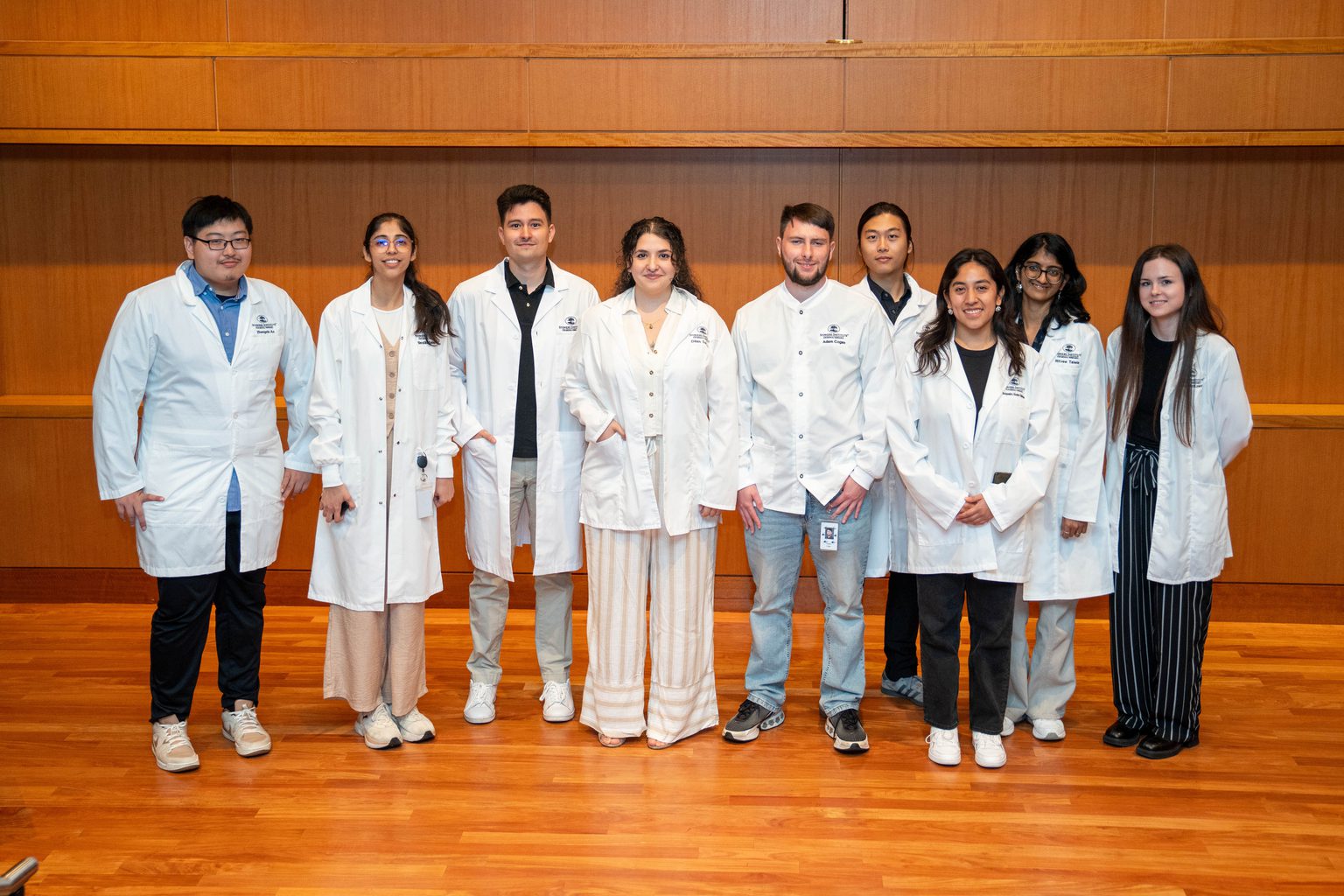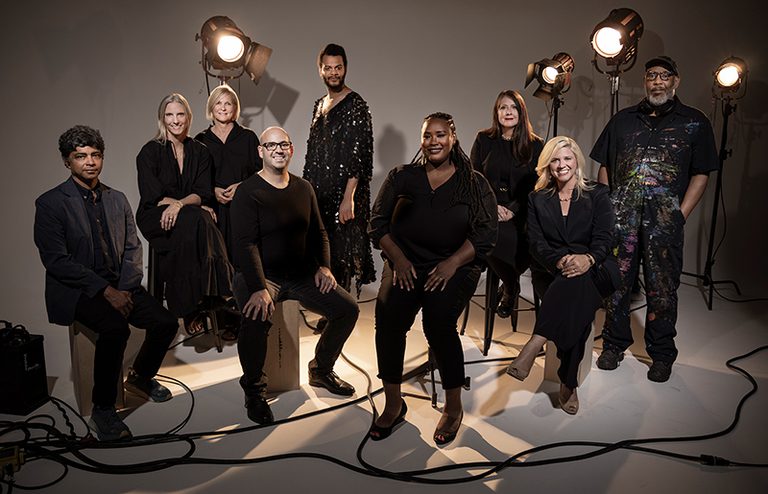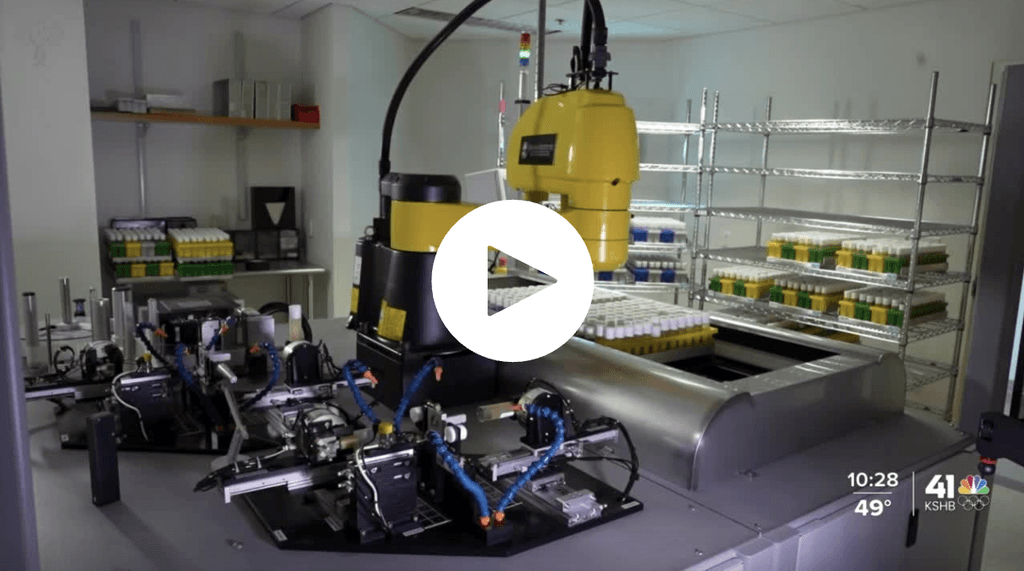News

09 October 2025
2025 Lab Coat Ceremony Welcomes Graduate Students To Their Thesis Labs
An annual tradition marks the start of scientific discovery for the 2024-2025 class of Stowers Graduate School students.
Read Article
By Cathy Yarbrough
John P. (JP) McGinnis, a medical student, neuroscience researcher, and new father, relaxes by reading about politics and music as well as science and medicine. He’s also surprisingly active on Twitter, sharing information about books, articles, and blog posts that he’s read. “Reading is pretty much how I spend all my free time,” says McGinnis.
He has not had a lot of time to spare so far in 2017. On January 9, McGinnis successfully defended his PhD thesis based on his five years of neuroscience work in the lab of Stowers Investigator Kausik Si, PhD. Four days later, he and his wife Emily celebrated the birth of their first child. “I thanked Ella for kindly waiting to arrive until after I defended,” he jokes. Since Ella’s birth, McGinnis says that he and Emily have been in survival mode. They’ve enjoyed getting to know Ella and adjusting to parenthood—all while Emily finishes her doctoral dissertation in music education this spring.
For the past seven years, JP, whose hometown is Freeport, Illinois, has been in a different kind of survival mode as a member of the rigorous MD-PhD physician-scientist training program at the University of Kansas Medical Center (KUMC). He joined the program after graduating from Luther College in Decorah, Iowa, where he earned a BA degree in biology.
McGinnis majored in biology because he wanted to attend medical school after college. During his freshman year science classes, however, he became fascinated with experimental research. While a student at Luther, he worked in the labs of his biology and psychology professors. After his freshman year, he was a summer student in the physiology lab. “I was surprised by how much I liked research,” says McGinnis.
To learn more about research, McGinnis applied to and joined the Stowers Summer Scholars Program for undergraduates the summer before his senior year. As a Summer Scholar, he conducted experiments in stem cell biology under the guidance of Stowers Investigator Linheng Li, PhD, and another KUMC MD-PhD student, David Scoville. The experience boosted McGinnis’ interest in experimental research, but he still wanted to be a physician. He decided that after graduating from college he would enroll in a joint MD-PhD program, a graduate curriculum that combined the best of both worlds. McGinnis applied for KUMC’s MD-PhD program, which would allow him to conduct his predoctoral studies at the Stowers Institute.
After his second year as a medical student in the KUMC program, McGinnis returned to the Institute for a research rotation in Si’s lab. “I was becoming more interested in neuroscience, and what Kausik was trying to accomplish—understanding the molecular basis of long-term memory—was one of the most interesting problems I’d ever heard of,” says McGinnis. Si agreed to serve as McGinnis’ mentor for his predoctoral studies, and now, five years later, McGinnis has completed the requirements for a PhD degree in molecular and integrative physiology.
This spring, McGinnis is headed back to KUMC to finish the remaining two years of medical school. He anticipates that he’ll graduate in 2019. Then, armed with both MD and PhD degrees, he’ll begin what will likely be six to eight years of medical residency training. During his clinical rotations in the final two years of medical school, McGinnis will decide whether to apply for a residency program in neurosurgery, his current interest, or in another field of medicine. After his residency program, McGinnis hopes to work at a major academic medical center as a physician. “Even though I don’t necessarily see myself running a lab, I do want to keep a hand in some kind of research,” he says.
While a predoctoral researcher at Stowers, McGinnis received a lot of advice from Si. “Kausik always says to pay attention to results that don’t make immediate sense, because those are the kind of results that can lead to something new and important,” McGinnis recalls. Si also told him that great scientists are not necessarily the smartest ones but those who are “willing to put in the time thinking about their research.”
McGinnis says that he also admires Kausik for demonstrating a balanced life. “At 5:45 p.m., every day, Kausik goes home to cook dinner for his family,” McGinnis says. “He’s often back in the lab after his kids are in bed, but he obviously makes a point of spending time with his family during the week as well as on weekends. Seeing someone so successful make this time for family is quite a useful lesson for us younger scientists.”
During his five years in Si’s lab, McGinnis says he likely accomplished much more than he would have if his predoctoral training had occurred at most other institutions. “Because the research support services are so great at Stowers, I’m sure I was able to get more done, and learn more, than I otherwise would have,” he says.
According to Si, McGinnis’ research “opened up a completely new area for the lab.” In studies with fruit flies, McGinnis sought to identify the rewarding properties that result in some experiences being remembered for a long time while other experiences are not. Fruit flies were given a choice between two sweet and chemically similar sugars, D-arabinose and L-arabinose. While the fruit flies clearly preferred D-arabinose, subsequent tests showed that they were more likely to form long-term memories of L-arabinose. The results suggest that the immediate appeal of a reward, such as the taste of a sugar, does not always predict the reward’s long-term reinforcement value and, therefore, the likelihood that it will be remembered. McGinnis and his collaborators reported these findings in a 2016 eLife article.
Si explains the results of the study according to the “liking” (in-the-moment need) and “wanting” (motivational need) concept of rewards proposed by the University of Michigan scientist Kent C. Berridge, PhD. In McGinnis’ experiments with fruit flies, D-arabinose seemed to drive the “liking” component, while L-arabinose involved more of the “wanting” component.
Prior to McGinnis’ research, Si did not consider fruit flies a laboratory model for investigating the logic of so-called higher cognitive functions such as “liking” and “wanting” rewards. Now he does. When McGinnis heads back to medical school, other members of the Si Lab will continue this work by searching for the neurons underlying these processes in fruit flies.
News

09 October 2025
An annual tradition marks the start of scientific discovery for the 2024-2025 class of Stowers Graduate School students.
Read Article
In The News

03 July 2024
From In Kansas City Magazine: Meet 10 people, including Stowers Scientific Director Kausik Si, Ph.D., who are making a difference in Kansas City.
Read Article
In The News

08 March 2024
From KSHB, one of the area's top scientists, Kausik Si, Ph.D., from the Stowers Institute received a coveted award for his "paradigm shifting" work to understand how our memory works and how that defines us.
Read Article
Press Release
21 February 2024
Scientific Director Kausik Si from the Stowers Institute for Medical Research alongside Investigator Lukasz Joachimiak from the University of Texas Southwestern Medical Center received CZI's Collaborative Pairs Pilot Project Awards grant for their project titled, “Tuning memory by altering amyloids.”
Read Article